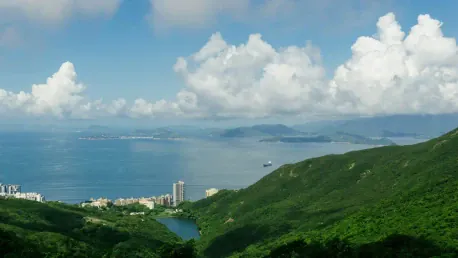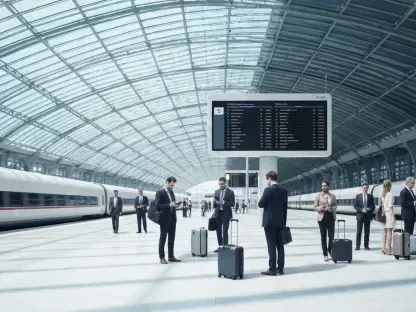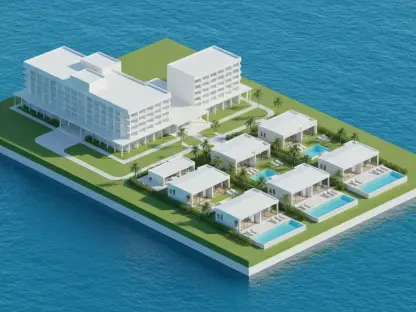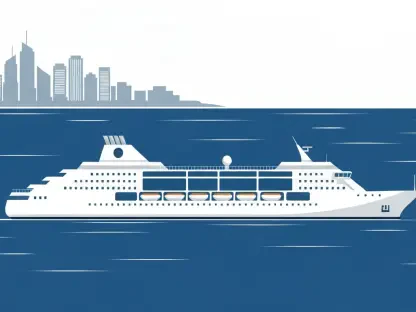As Hong Kong grapples with the challenge of balancing development with environmental preservation, South Lantau has emerged as a focal point for the city’s next wave of eco-friendly tourism initiatives. The Development Bureau has unveiled ambitious plans to transform South Lantau, along with Lamma Island’s quarry site and parts of the Northern Metropolis, into recreational hubs that offer both tourism and residential opportunities. However, these plans have sparked a debate on how best to balance economic growth with the preservation of the unique ecological and cultural characteristics of these areas.
The Push for Ecotourism and Economic Viability
Francis Lam Ka-fai, former president of the Hong Kong Institute of Surveyors, has emphasized the importance of providing essential infrastructure to enhance the financial viability of tourism projects in South Lantau. Current transport costs and restrictive vehicle access policies make it challenging to attract investors unless basic infrastructure is improved. Lam highlights that the profitability of tourism projects can be highly variable, depending significantly on visitor numbers. This financial unpredictability necessitates government intervention to ensure the economic feasibility of ecotourism in the region.
Roy Ng Hei-man from the Conservancy Association advocates for the development of ecotourism but stresses the need for preserving ecologically sensitive areas in South Lantau. Ng suggests alternative development approaches for locations like Cheung Sha Beach, proposing that instead of constructing a new pier, more environmentally friendly options should be considered. Ng’s call for detailed government planning underscores the importance of safeguarding the natural habitats while promoting tourism.
The bureau’s vision for South Lantau involves transforming areas such as Cheung Sha, Pui O, Shui Hau, and Shek Pik into comprehensive leisure and recreational destinations. However, concerns have been raised by residents of Lamma Island, a neighboring region also slated for development. Writer Rob Garratt, a long-time resident, fears that the introduction of superyachts and luxury infrastructure might disrupt the island’s rustic and uncommercialized charm. This sentiment reflects a broader apprehension about the potential loss of the area’s unique character in the face of commercial development.
Diverse Tourism Experiences and Community Concerns
Timothy Chui, executive director of the Hong Kong Tourism Association, has expressed support for the government’s initiative, predicting that diverse tourism projects could offer a range of experiences and facilitate more in-depth exploration of the region. Chui believes that this diversity can cater to different market segments, providing opportunities for both high-end luxury tourism and more tranquil scenic experiences. The bureau has outlined plans for each area, with Lamma Island poised for high-end coastal resorts and luxury housing, Tsim Bei Tsui designated as a “Thematic Activity Node,” and Pak Nai characterized as a “Tranquil Scenic Node.”
Despite these optimistic projections, community sentiments reveal a strong desire to preserve the unique qualities of less commercialized areas like Lamma Island. Residents and environmental advocates argue that maintaining the island’s rustic character is essential for sustaining the local culture and ecosystem. As the government moves forward with its development plans, balancing these community concerns with the economic benefits of tourism will be crucial.
Experts have suggested that government involvement in providing infrastructure is vital not only for economic reasons but also to address the inherent unpredictability of tourism profits. The challenge lies in offering sufficient incentives to attract investment while ensuring that development does not compromise the ecological and cultural integrity of the region. The success of these projects will depend on detailed planning, community engagement, and a genuine commitment to environmental conservation.
The Path to Balanced and Sustainable Development
Hong Kong is currently facing the challenge of balancing urban development with environmental conservation, and South Lantau has become the centerpiece of the city’s latest eco-tourism initiatives. The Development Bureau has revealed extensive plans to revitalize South Lantau, alongside Lamma Island’s quarry site and sections of the Northern Metropolis, transforming them into vibrant recreational destinations that cater to both tourists and residents. Despite the visionary nature of these proposals, they have ignited a heated debate concerning how to effectively balance economic growth with the preservation of the distinctive ecological and cultural attributes inherent in these areas. Stakeholders are divided, with some advocating for a cautious approach that prioritizes environmental sustainability, while others emphasize the potential economic benefits that increased tourism and residential development could bring. The debate continues as Hong Kong strives to find a harmonious balance between progress and preservation.









